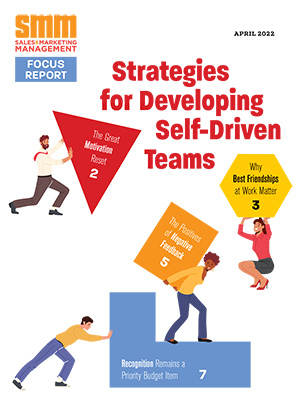Wouldn’t it be helpful to have a roadmap that lays out exactly how to drive more sales for your B2B business? You need a guide that uncovers what potential customers are looking for while showing you the exact steps to take at each stage of the buying process.
That’s exactly what a B2B sales funnel does.
If you’re not already using one, you’re missing a crucial piece of your marketing strategy.
I’ve seen countless businesses struggle because they treat sales as a one-size-fits-all approach. The truth is that your sales funnel is a dynamic system that requires consistent attention and refinement.
Here are some effective steps for building a B2B sales funnel that converts cold leads into loyal customers.
1. Align Goals with Customer Demands
To optimize your sales funnel, you should ensure that it revolves around your customers, not just your business goals. If what you’re offering doesn’t solve a real problem for your target audience, even the best funnel won’t work.
Start by creating an ideal customer profile (ICP) based on real data, not assumptions. You need to know:
- What pain points do they experience daily?
- What challenges prevent them from growing their business?
- What solutions have they tried before, and why didn’t they work?
- What metrics do they care about when evaluating a solution like yours?
Customer surveys, interviews, and market research reports are the best way to gather this information. Don’t just guess – talk to your existing customers or potential prospects directly.
Once you understand their needs, you can align your business goals with their demands. Instead of pushing a product, position your offering as the most logical solution to their problem. If your goals don’t align with their needs, your funnel will leak, and conversion rates will stay low.
2. Organize and Align Your Teams
Many B2B companies struggle with disjointed sales and marketing teams. If these departments don’t communicate, potential leads get lost between stages, causing missed opportunities.
Marketing attracts and nurtures leads, while sales focuses on converting and closing deals. However, here’s the problem: If marketing hands off poor-quality leads, sales struggle to close. And if sales don’t provide feedback, marketing doesn’t know what’s working.
To fix this, ensure that:
- Both teams have a shared understanding of the sales funnel stages.
- Leads meet clear qualification criteria before being passed to sales.
- Regular meetings take place to discuss lead quality and conversion insights.
- There’s a seamless handoff process between marketing and sales.
When your teams move in perfect alignment, leads flow smoothly through the funnel. This is how to build a B2B sales funnel that converts cold leads.
3. Create High-Value Content for Each Funnel Stage
Content is the fuel that moves prospects through your B2B sales funnel. However, you need to create the right content at the right stage. Each funnel stage requires different content types:
Awareness Stage (Top of Funnel – TOFU)
At this stage, your prospects don’t know much about you. They’re searching for information to solve a problem. Your job is to educate, not sell.
Best content types:
- Blog posts
- Industry reports
- Infographics
- Educational videos
Example: If you sell a SaaS email marketing solution, create an article to showcase how email marketing can help businesses, such as “How Automated Email Sequences Can Increase Conversions by 30%.”
Interest & Evaluation Stage (Middle of Funnel – MOFU)
Now, prospects know they have a problem and are looking for possible solutions. Your goal is to position your product as the best choice.
Best content types:
- Case studies
- Whitepapers
- Webinars
- Comparison guides
Example: Offer a case study showcasing how an online business improved its customer retention by integrating email marketing tools into its sales funnel.
Decision & Engagement Stage (Bottom of Funnel – BOFU)
At this stage, leads are ready to make a decision. They just need that final push. Your goal is to eliminate doubts and build trust.
Best content types:
- Live product demos
- Personalized consultations
- Free trials or limited-time discounts
- Customer testimonials
Example: Offer a 30-minute demo where your sales team walks the lead through your platform and answers questions in real time.
Each content type should guide the prospect to the next stage, reducing friction and increasing conversions.
4. Strategic Channel Management
Your potential customers are scattered across different platforms. Your job is to meet them exactly where they are. In addition to leveraging online channels, it’s crucial to create in-person opportunities to connect with prospects and clients. Events such as conferences, workshops or product launches can be highly effective at engaging your audience and building trust. For this, partnering with an expert event agency is essential. These agencies can help you plan and execute professional events that showcase your brand while driving leads through your sales funnel.
Top-of-Funnel Channels:
- Middle-of-Funnel Engagement:
- Targeted webinars
- Personalized email campaigns
- Retargeted advertising
- Bottom-of-Funnel Conversion:
- Personalized sales pitches
- Direct email
- One-on-one calls
5. Use the Right Channels to Reach Your Audience
Communication can make or break your sales funnel. One bad interaction can send potential customers running. Implement these communication strategies:
- Deploy live chat solutions
- Use intelligent chatbots
- Create response guidelines for your team
- Ensure multi-platform communication consistency
Customers are more likely to abandon a brand after a single poor experience. Don’t let communication be your downfall.
6. Continuous Optimization
Your sales funnel isn’t a set-it-and-forget-it system. It’s a dynamic process that requires constant refinement by regularly monitoring metrics suggested in this Attrock’s post to gain insights into the accuracy and potential of the sales funnel.
Here are some key metrics to track for marketing success:
- Lead Conversion Rate: Percentage of leads that turn into customers
- Cost Per Acquisition (CPA): How much it costs to acquire a new customer
- Customer Lifetime Value (CLV): The long-term revenue from a customer
- Drop-Off Rates: Touchpoints where leads are leaving the funnel
Example Optimization Strategy:
If you notice that many leads drop off at the evaluation stage, it could mean:
- Your pricing isn’t clear
- Your competitors are offering more compelling deals
- Prospects don’t understand the product benefits fully
Regularly analyze where leads drop off. Each exit point is an opportunity to improve your funnel’s performance.
Learning how to build a B2B sales funnel that converts cold leads takes time, effort and strategic thinking. However, immense rewards await – a predictable, scalable system that turns cold leads into loyal, long-term customers.
Now, it’s time to put this into action and start building a funnel that delivers results.





